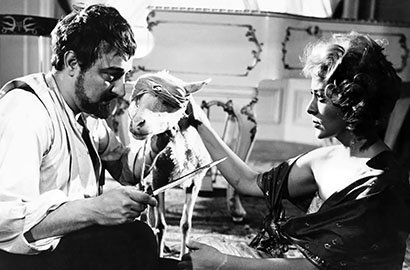Achtung, veränderte Öffnungszeiten! Alle Veranstaltungen ab Dezember 2022 beginnen um 20 Uhr!
In
der „Lecture & Film“-Reihe Kino am Abgrund der Moderne führen
namhafte Expert:innen aus Europa und den USA in die vielfältigen
Facetten von Buñuels Werk ein.
Termin: Donnerstag, 25. Mai 2023, 20 Uhr im Kino des DFF
Film: EL ÁNGEL EXTERMINADOR, Mexiko 1962, 93 Min.
Lecture: Pietsie Feenstra (Montpellier) „Spanish Cinematographic Memories“ and Space: Bunuel’s El ángel exterminadorVortrag in englischer Sprache
Having
left his native Spain after the Civil War (1936-1939), Buñuel spent
many years in exile in Mexico. Like the film VIRIDIANA (1961), EL ÁNGEL
EXTERMINADOR (1962) was produced at the end of his Mexican period, and
in co-production with Spain. His return to Spain and the creation
of VIRIDIANA were not received with open arms and one year later he
directed this striking film about an angel who leaves a place. Is this
place the house in the film or Spain itself? EL ÁNGEL EXTERMINADOR is
fascinating because of the way it uses space. Two sites can be
distinguished: an inside and an outside. The scene inside the house has
been studied as a huis clos (a room with no exit), but I would like to
focus on the “outsider” perspective. Can we compare this film to some
central tendencies represented by a “cinematographic memory” of Spanish
cinema? How do the opening and final credits refer directly to the
period of the 1960s during the Francoist regime (1939-1975)?
Pietsie Feenstra is professor in the department of cinema, audiovisual studies and new media at the Université Paul-Valéry Montpellier 3.





